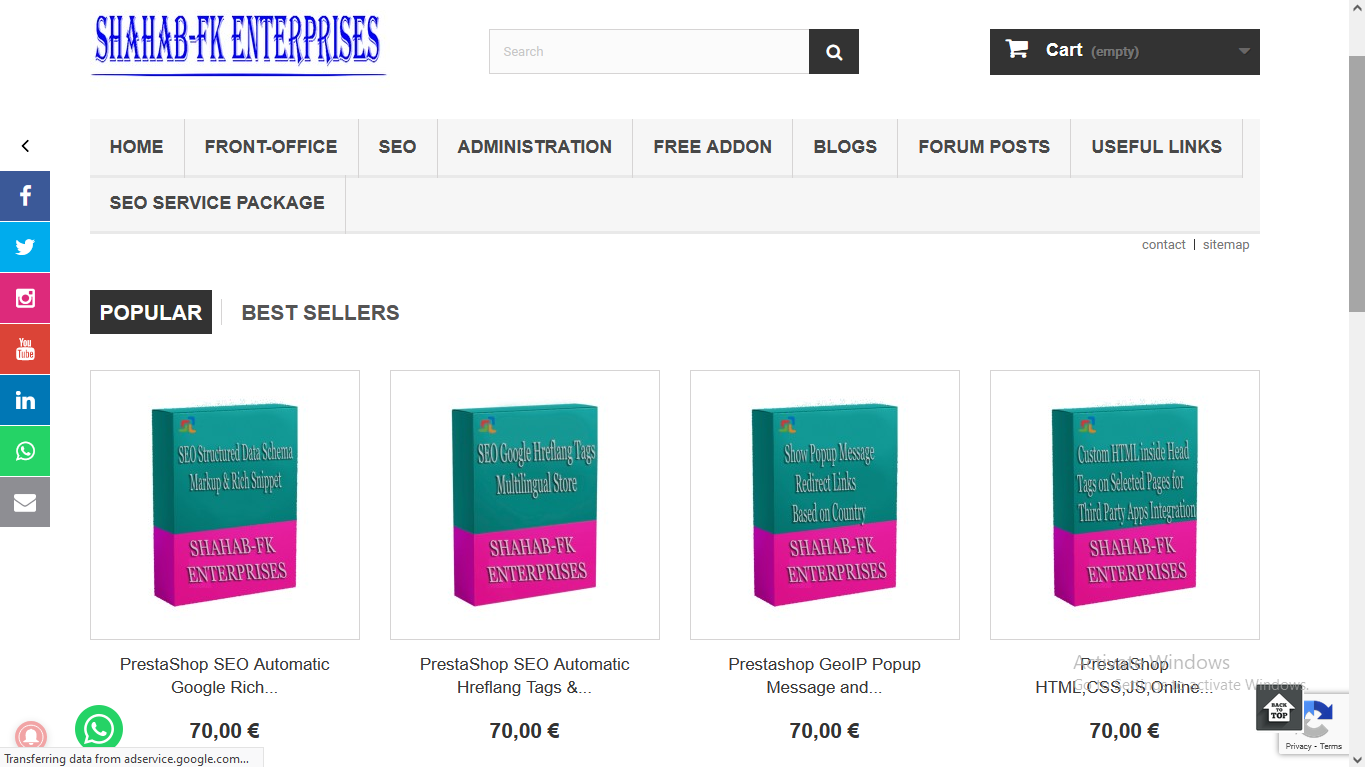Migrating an online store from Shopify to PrestaShop involves several steps to ensure a smooth transition of your products, customer data, design, and functionality. Here’s a general guide on how to approach the migration process:
- Backup Your Shopify Store: Before you begin the migration process, make sure to back up all your essential data, including product details, customer information, orders, and any other relevant data from your Shopify store.
- Set Up Your PrestaShop Store: If you haven’t already, set up a new PrestaShop store. Install and configure the necessary plugins and themes to match your desired design and functionality. Make sure the PrestaShop store is ready to receive the migrated data.
- Migrate Products: Export your product data from Shopify in a compatible format (CSV, XML, etc.). Make sure to include product details such as names, descriptions, images, prices, and variants. Then, import this data into PrestaShop using the appropriate import tool or plugin. You might need to map the fields from Shopify to PrestaShop to ensure accurate data transfer.
- Migrate Customer Data: Export customer data from Shopify, including names, email addresses, shipping and billing addresses, and order history. Import this data into PrestaShop’s customer database. Send out notifications to customers about the migration and provide any necessary instructions for resetting passwords or accessing their accounts on the new platform.
- Migrate Orders: If possible, export order data from Shopify and import it into PrestaShop. This might require some manual work if the order formats are significantly different between the platforms. Ensure that order statuses, payment information, shipping details, and customer data are accurately transferred.
- Set Up URL Redirects: Shopify and PrestaShop might have different URL structures. To ensure that your SEO rankings are maintained and customers are redirected to the correct pages on your new PrestaShop store, set up proper URL redirects from Shopify URLs to their corresponding PrestaShop URLs.
- Design and Theme Customization: Customize your PrestaShop theme to match the design elements and branding of your Shopify store. Adjust colors, fonts, layouts, and any other visual elements to ensure consistency.
- Test Functionality: Thoroughly test your PrestaShop store to ensure that all the products, customer data, and functionality are working correctly. Test the checkout process, payment gateways, shipping options, and any plugins or custom features you’ve integrated.
- Update DNS and Go Live: Once you’re confident that your PrestaShop store is ready, update your domain’s DNS settings to point to your new PrestaShop store. Double-check everything one last time before making the switch live.
- Monitor and Optimize: After the migration, closely monitor your store for any issues, broken links, or functionality glitches. Continuously optimize your PrestaShop store for better performance, user experience, and SEO.
Remember that every migration process can be unique, and the complexity of the task can vary based on your store’s size, customization level, and specific requirements. If you’re not comfortable performing the migration yourself, you might consider hiring a professional or consulting with experts who specialize in e-commerce migrations.

